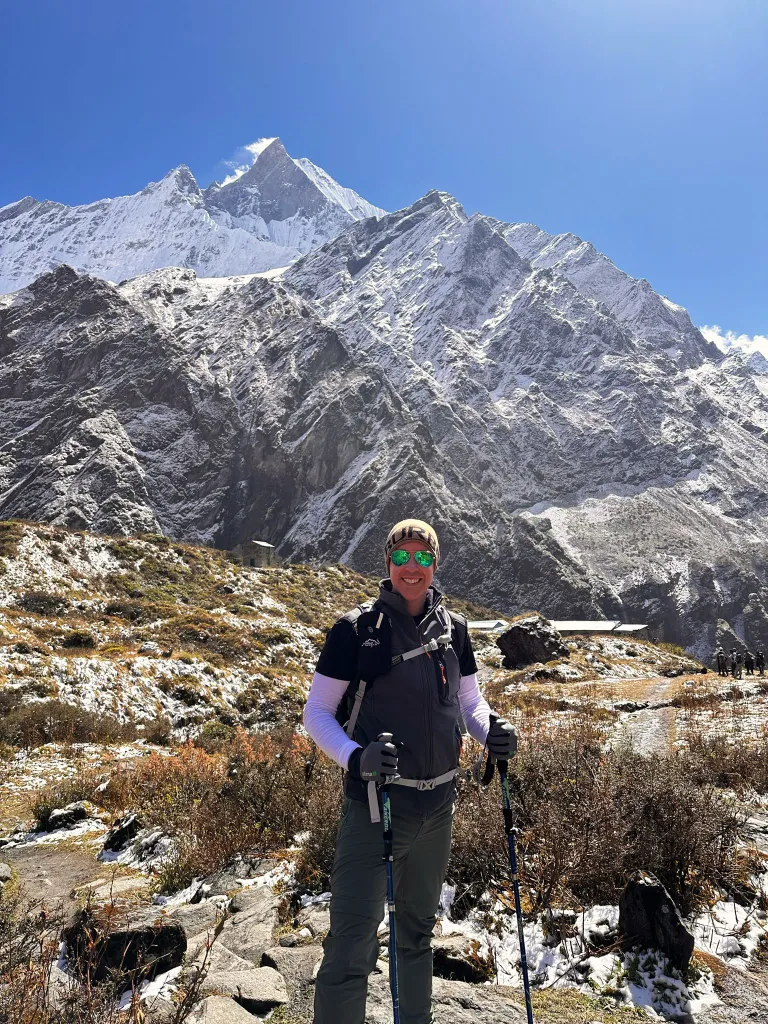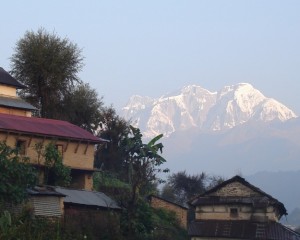How Hard is Lobuche Peak Climb?
You want to add some adventure in your trekking journey. Have you heard about the Lobuche Peak Climb ? One of the famous trek peak of the Everest region.
The adrenaline pumping activity Lobuche Peak climbing along the heat of the Khumbu region is fun. But can we navigate the icy ridges and rocky edges of the terrain ?
Let's spill all the facts about the difficulty of Lobcuhe Peak Climb
Overview of the Lobuche Peak
Lobuche Peak is one of the prominent trekking peaks in the Khumbu region of Nepal, standing at an elevation of 6119 m. It features two main summits: Lobuche East (6119 meters) and Lobuche West (6145 meters). Lobuche East is regarded as the true summit due to its accessibility and relatively easier climb compared to the more technically demanding Lobuche West.
Popular among climbers, Lobuche Peak's ascent is relatively straightforward with the requirement of limited technical expertise. Classified as a Group B trekking peak by the Nepal Mountaineering Association (NMA), it demands minimal mountaineering skills. The climb involves trekking through steep, rocky terrain and navigating icy and frozen stones, and ascending a 45-degree snow wall before reaching the summit.
Summit day involves 8-10 hours of climbing including both the ascent and descent to the Lobuche Base Camp. The entire expedition can last from 14 to 20 days, depending on the itinerary, which often includes a segment of the Everest Base Camp trail.

Is Lobuche Peak Climb That Difficult ?
Climbing Lobuche Peak in Nepal's Khumbu region isn't excessively difficult, but it's definitely a challenge worth preparing for. As a Group B trekking peak, it requires basic mountaineering skills like using ropes and crampons. The climb involves navigating steep terrain, icy ridges, and a snow wall, with summit day typically lasting 8-10 hours.
Altitude is a factor, so acclimatization is crucial to avoid altitude sickness. With proper training, preparation, and a good guide, many climbers find Lobuche Peak to be a rewarding adventure offering stunning views and a sense of achievement in the Himalayas.
Factors That Makes The Lobuche Climb Difficult
Even though it is classified as a trekking peak. Yet, there are some factors that contribute to the difficulty of the Lobuche Peak. Let's find out about them:
- High Altitude: Lobuche Peak stands at 6119 m which poses challenges related to reduced oxygen levels. Climbers must acclimatize properly to prevent altitude sickness and ensure their bodies can function effectively at high altitude.
- Technical Terrain: The climb involves navigating through steep and rocky terrain, as well as icy ridges and a 45-degree snow wall. Basic mountaineering skills such as using crampons, ropes, and ice axes are necessary to safely ascend and descend these sections.
- Physical Demands: Summit day typically requires 8-10 hours of continuous climbing, including steep ascents and descents. Endurance, stamina, and physical fitness are essential to complete the climb successfully.
- Weather Conditions: The Himalayan weather can be unpredictable and harsh, even during peak climbing seasons. Climbers may encounter strong winds, snowfall, and sudden changes in weather, which can affect visibility and increase the challenge of the ascent.
- Logistical Challenges: Organizing permits, transportation to Lukla, and hiring experienced guides and porters are essential logistical tasks. Ensuring adequate supplies of food, water, and gear throughout the trek adds to the complexity of the expedition.
- Risk Management: Despite being a Group B trekking peak with relatively manageable technical aspects, there are inherent risks associated with high-altitude climbing. Proper risk assessment, adherence to safety protocols, and being prepared for emergencies are crucial for a safe climb.

Tips to Deal With the Lobuche Climb Difficulty
- Physical Fitness: Prioritize physical conditioning with cardio workouts, strength training (especially legs and core), and endurance exercises. Include hiking and stair climbing to simulate the terrain and altitude challenges.
- Acclimatization: Plan a gradual ascent schedule with acclimatization days at key points like Namche Bazaar, Dingboche, and Lobuche Village. This allows your body to adjust to higher altitudes, reducing the risk of altitude sickness.
- Technical Skills: Familiarize yourself with basic mountaineering techniques such as using crampons, ice axes, and ropes. Practice these skills before the climb to ensure confidence and efficiency on the mountain.
- Weather Awareness: Stay informed about weather conditions in the region. Choose the best climbing seasons (spring and autumn) for stable weather and clear visibility. Be prepared for sudden weather changes and pack accordingly.
- Proper Gear: Invest in quality mountaineering gear including insulated clothing, waterproof outer layers, sturdy hiking boots, and a reliable sleeping bag. Ensure all equipment is in good condition and tested beforehand.
- Hydration and Nutrition: Maintain a balanced diet rich in carbohydrates, proteins, and fats to fuel your body for strenuous activity. Stay hydrated throughout the climb to combat the effects of high altitude.
- Safety and Emergency Preparedness: Carry a comprehensive first aid kit and know how to use it. Familiarize yourself with emergency procedures and communication methods. Stay connected with your climbing team and guides.
To wrap up. Climbing Lobuche Peak offers adventurers a challenging yet incredibly rewarding experience in Nepal's Khumbu region. From navigating technical terrain and acclimatizing to high altitudes to witnessing breathtaking panoramic views of Everest, Cho Oyu, Lhotse and surrounding peaks, every step towards the summit is filled with both physical and mental tests.
To embark on this unforgettable journey, consider partnering with Nepal Vision Treks, experts in guiding climbers through the Himalayas with safety, expertise, and a deep appreciation for the local culture and environment.
FAQS






